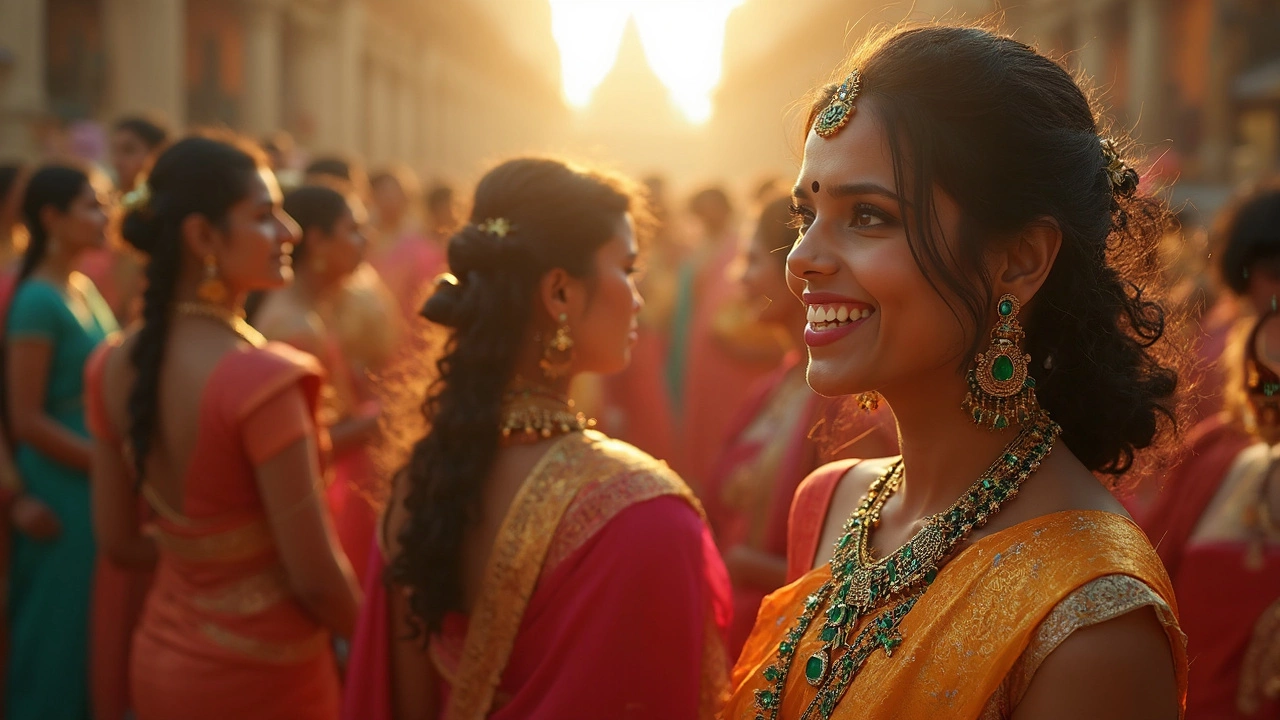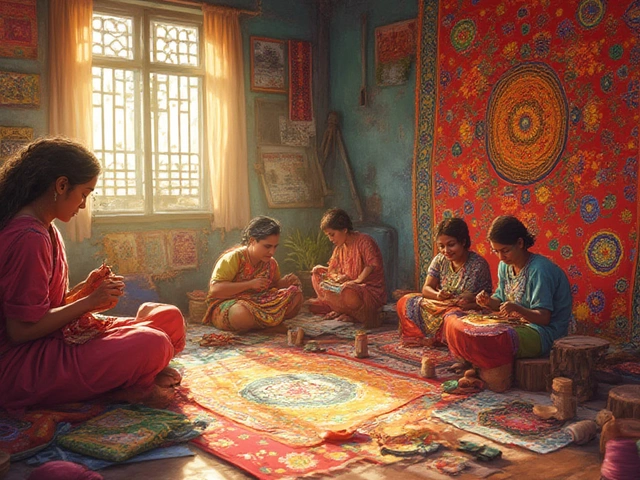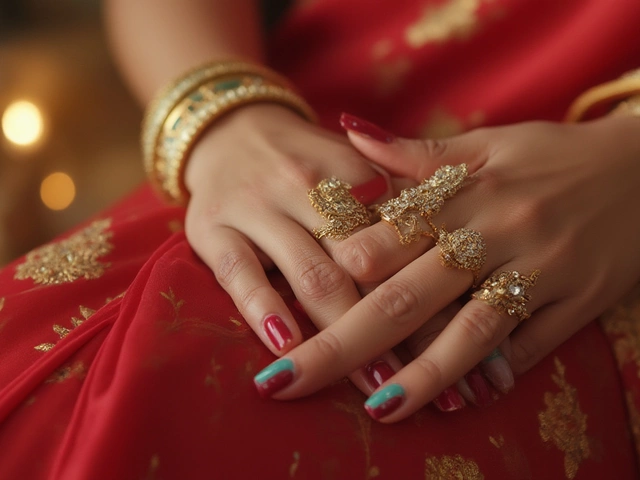Emeralds aren’t just pretty stones in India—they’re practically a craze, especially when it comes to temple jewellery. Walk into any South Indian goldsmith’s shop, and you’re likely to see gleaming gold necklaces with bright green emeralds sitting right in the middle. This isn’t just about looking flashy. There’s a whole basket of reasons why emeralds hold such a strong place in Indian hearts.
For starters, Indian traditions link emeralds to wisdom and fortune. This isn’t modern marketing—these beliefs go back hundreds of years, right into the ancient scriptures. People still slip emerald-studded rings on their fingers before important exams, business deals, or prayers. And if you visit a temple on a festival day, keep an eye out for the priests’ jewellery; a lot of the most prized pieces include emeralds as the star of the show.
It’s not only about faith, though. Emeralds are seen as good for the body and mind, helping with everything from eye strain to calming your nerves. That’s why you’ll see grandmothers insisting on gifting emerald pieces at weddings, claiming it’ll keep the couple happy and smart. In India, buying or wearing emeralds is almost like buying a little extra luck on the side.
- The Ancient Pull of Emeralds
- Gods, Luck, and Healing Powers
- Emeralds in Temple Jewellery: More Than Just Bling
- How to Spot a Great Indian Emerald
- Tips for Buying and Wearing Emerald Jewellery
The Ancient Pull of Emeralds
Emeralds have held Indians in their sway long before the fancy marketing of gemstones began. The earliest records date back to the Vedic texts, which mention "marakata" (emerald) as a stone linked to Mercury, the planet of communication and intellect. Even back then, people thought of emerald as a bringer of learning and good fortune. Fast-forward a bit, and you’ll find emperors like the Mughal rulers collecting emeralds from Colombia and using them in their crowns and weapons—often engraved with verses from the Quran or poetry in Persian script. No kidding, rare emeralds from the Mughal collections have shown up in European museums!
The superstition and excitement weren’t just limited to rulers. For centuries, temple priests and jewelers carved emeralds into amulets and beads, sticking them into temple jewellery or passing them down as family heirlooms. In a classic book on Indian gems, historian S.R. Bhandarkar wrote,
“Among gems, the emerald alone can be said to have been equally prized by kings, temple priests, and commoners alike in India’s past.”
Why did people buy into this obsession? A big part of it was trade. India has always been crazy about gemstones, but it doesn’t produce much emerald locally—the real stuff mostly came from Central Asia and, later, South America through clever trade routes. As a result, emeralds were rare, pricey, and seen as a symbol of luxury and good luck.
Want to see how much Indians valued emeralds over the ages? Check this out:
| Era | Emerald Usage |
|---|---|
| Vedic Period | Used in rituals and worn as talismans |
| Mughal Empire | Embedded in crowns, swords, and mosque ornaments |
| South Indian Dynasties | Featured in temple jewellery, especially for deities |
This old obsession is what makes emeralds a mainstay in Indian temples and rituals even now. They’re not just beautiful stones; they carry a story that spans empires and faiths.
Gods, Luck, and Healing Powers
In Indian culture, emeralds are much more than a shiny addition to temple jewellery. People have believed for centuries that emeralds actually help connect them to the divine. A lot of Hindu temples feature idols decked out with emerald-studded ornaments, and for a reason. According to ancient texts, emeralds were considered one of the "navaratnas" or nine precious gems, all offered to Hindu gods and goddesses.
One popular story goes back to the Puranas, where emeralds were described as stones that could bring wisdom and protect against evil forces. Devotees even place emerald pieces in the temple as offerings, hoping it’ll bring blessings for education and business. And if you’ve ever noticed, the goddess Lakshmi, known for wealth, is often shown wearing emerald jewellery in temple art and statues.
Now, when it comes to luck, Indians take things seriously. Astrologers often suggest wearing an emerald for folks whose birth chart favors Mercury (Budh). They say it sharpens your mind and speech—pretty handy for students or anyone in business. Here’s a quick breakdown of how emeralds are believed to work their magic:
- Improves focus and memory
- Brings success in education and exams
- Attracts good fortune, especially in new ventures
- Protects against bad luck and negative energy
There’s also a big belief in their healing powers. Some folks swear by emeralds for soothing the eyes or calming frayed nerves. Ayurveda, the traditional medicine system, says that wearing an emerald can help with headaches and boost mental clarity.
Some jewellers will even give you advice on which finger to wear an emerald ring, or the best time to start wearing it based on your horoscope. It’s not just superstition—this advice is backed by long-standing traditions and tons of stories shared at family gatherings.
| Belief | Associated Benefit |
|---|---|
| Mercury (Budh) astrology | Better communication and decision-making |
| Offerings in temple settings | Blessings for wealth and knowledge |
| Traditional Ayurveda | Relief from eye strain and stronger nerves |
So, when you spot emeralds in Indian temple jewellery, remember—they’re not just for the shine. There’s a whole world of meaning and history behind those green stones.
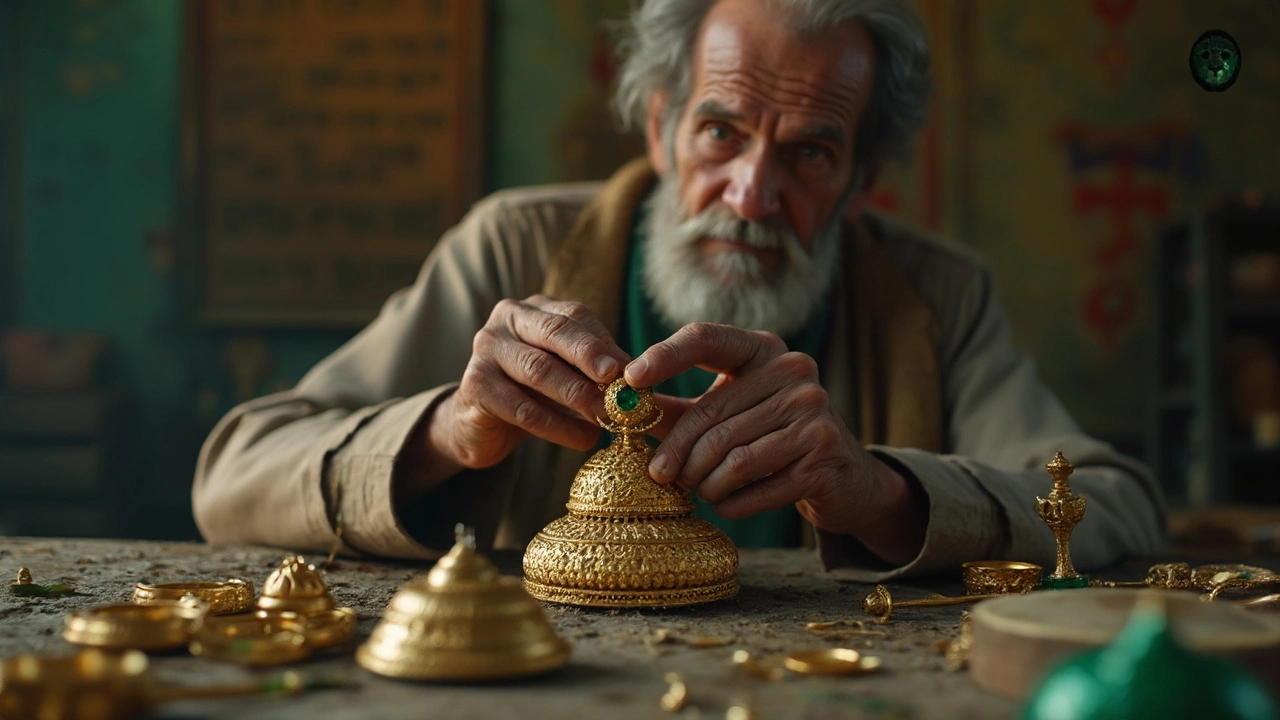
Emeralds in Temple Jewellery: More Than Just Bling
It’s easy to assume emeralds in temple jewellery are all about richness and show, but there’s a lot more going on beneath those layers of gold. In South India, especially in places like Tamil Nadu and Karnataka, temple jewellery isn’t just for dressing up statues or dancers—it’s a solid piece of tradition, packed with meaning.
These jewels usually land up in temples for a reason. Emeralds are said to symbolize growth, harmony, and clarity—the same stuff folks pray for during rituals. That green stone you spot in the middle of a goddess’s nose ring or a priest’s pendant isn’t just an afterthought. It’s meant to make the whole atmosphere feel more “divine,” according to many artisans in Chennai and Bengaluru.
Another thing: emeralds are highly prized because they don’t just sit tight on the jewellery. During temple festivals, some old-school temples in South India actually rotate the gemstones on their deities, giving pride of place to emeralds on specific days tied to Mercury (Budhwar in Hindi), since Indian astrology considers Mercury the “owner” of emeralds. This is seen as a way to boost positive vibes in the temple and keep worshippers’ minds clear and calm.
Here’s what makes emeralds stand out in temple jewellery:
- Special stone cuts: Temple jewellery often uses cabochon or flat-cut emeralds, making them pop among rows of rubies, diamonds, and pearls.
- Settings built to last: Goldsmiths design heavy-duty settings so emeralds stay safe during crowded festivals, processions, or dance performances like Bharatanatyam.
- Passed down stories: It’s common for families to donate emerald jewellery as part of vows to temples, especially when their prayers get answered. These donated pieces can stay with the temple for generations, popping up year after year during big festivals.
There's even a bit of stats to back this up. A study by the Gem & Jewellery Export Promotion Council in 2023 noted that temple jewellery makes up around 28% of the coloured stone market in southern India, and emeralds take the lead spot, especially for big-ticket temple orders.
So, the next time you see a deity decked out in green, remember, that’s more than just decoration. For many Indians, those emeralds channel history, faith, and a deep sense of belonging.
How to Spot a Great Indian Emerald
Picking out a top-notch emerald for your Indian jewellery isn’t rocket science, but there are a few things you need to know if you don’t want to get ripped off. Most people get attracted to the lush green color, but there’s more to it than just shade. Here’s the deal on how to spot a winner:
- Color: Go for a deep, even green—not too dark, not too light. Indian buyers love emeralds that look lively and clear, kind of like fresh grass after rain. Avoid yellowish or bluish tinges.
- Clarity: Almost all emeralds have tiny cracks or lines inside, called inclusions. That’s normal, but you don’t want huge cloudy patches or long cracks that make the stone look messy. Some small inclusions are okay—they’re proof your emerald is real.
- Cut: Good Indian emeralds are cut to show off their color and sparkle. Most of the time you’ll find them in rectangular ‘emerald cuts,’ but oval and round shapes are popular too. A sloppy cut can make an expensive stone look dull.
- Origin: Emeralds in Indian temple jewellery often come from Zambia, Colombia, or even local mines in Rajasthan. Colombian stones tend to be pricier and more vibrant, while Zambian gems are valued for their blue-green tint.
- Treatments: A lot of emeralds are oiled to make them look better. That’s standard, but make sure the seller tells you if stronger treatments like resins were used, which can affect the price and how you should clean it later.
| Feature | Great Emerald | Low-Grade Emerald |
|---|---|---|
| Color | Rich, even green | Pale or too dark, uneven |
| Clarity | Few minor inclusions | Cloudy or cracked |
| Cut | Sharp, symmetrical | Off-center, dull |
| Treatments | Standard oiling | Heavy resins or dyes |
If you’re shopping for emerald jewellery in India, don’t shy away from asking the seller for a certificate. Genuine places usually give them out with pricier stones. And if you’re unsure, look at emeralds under different lights—fake or treated stones sometimes reveal their tricks under a tube light compared to sunlight. Trust your eyes, but use your head too.
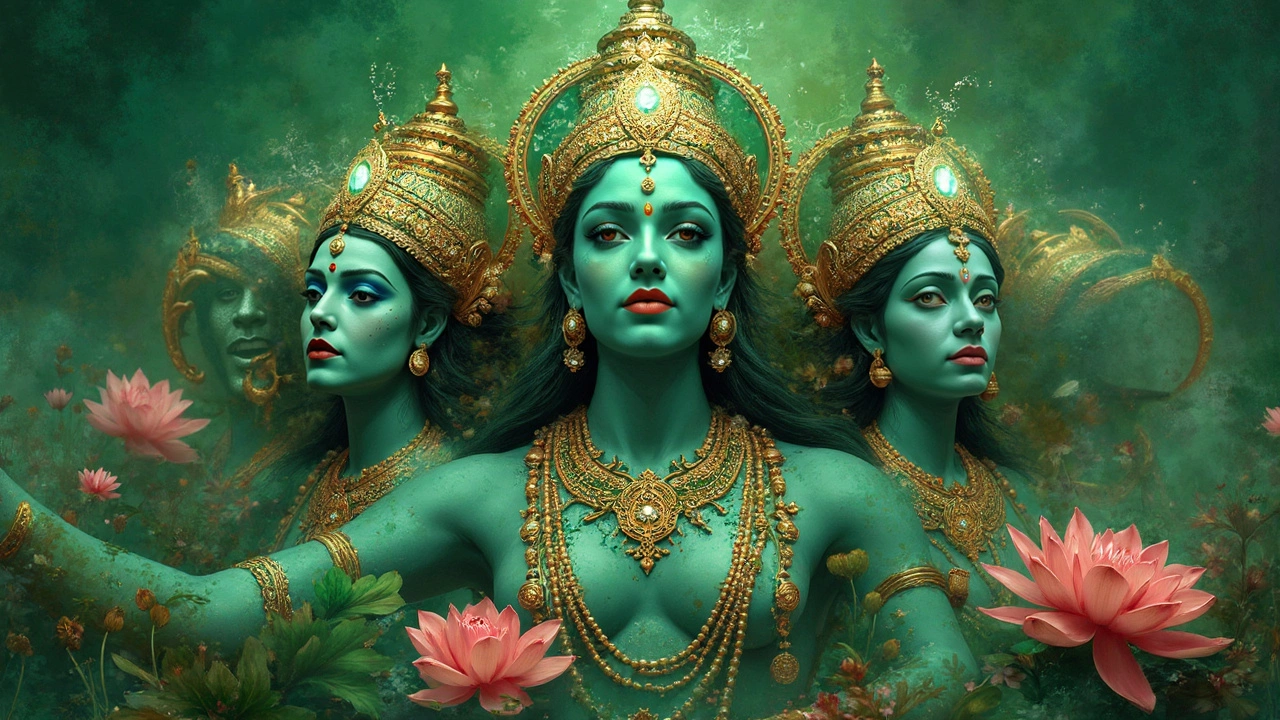
Tips for Buying and Wearing Emerald Jewellery
If you’re thinking about adding emeralds to your jewellery box, there are a few things to know so you don’t end up with regrets. Not all shiny green stones are the real deal, and shopping for emeralds—especially in India—can be confusing if you’re not prepared.
First, only natural emeralds have that deep, rich green color people love. Synthetic or treated stones might look perfect, but they lack the character and value of the real thing. Always ask if the stone is natural or treated (lots are treated with oils or resin to hide cracks). If you’re spending good money, make sure you get a certificate from a known gem lab, like GIA or IGI. It’s not old-fashioned—it keeps you safe from fakes.
Quality matters more than size. A small, clear emerald is usually more valuable and durable than a big one full of cracks or cloudiness. Here’s a quick guide on what to check:
- Color: Go for bold, bright green. Lighter or too blue stones aren’t as prized in Indian culture.
- Clarity: Some flaws are normal (they call them 'jardin' in the trade), but avoid stones with cracks running through them.
- Cut: Well-cut emeralds show off their color and hide minor blemishes. Temple jewellery often uses rectangular or oval shapes.
- Origin: Zambian and Colombian stones are common, but Indian buyers often pay extra for Colombian ones, thanks to their legendary color.
Here’s a tip when wearing emeralds: treat them gently. Emeralds are softer than other stones like rubies and diamonds, so banging them around can chip or crack them. Avoid harsh chemicals or ultrasonic cleaners—just wipe with a soft cloth and plain soapy water.
When setting emeralds in temple jewellery, gold is the metal of choice. It not only looks traditional but protects the stone better than silver or other metals. If you want extra blessings, Indian astrologers suggest wearing an emerald on your little finger, set in gold, on a Wednesday morning, especially if you want to boost smarts or luck.
"An authentic emerald's color should be vibrant, with minor marks inside the stone that prove it's natural. If it looks too perfect, be careful—nature rarely makes emeralds flawless," says gem dealer Rahul Kumar of Hyderabad’s Pearl City Gems.
For budgets, prices can go from about ₹3,000 per carat for Indian emeralds to ₹50,000 and above for top-grade, certified Colombian stones. Here’s a ballpark comparison:
| Origin | Average Price (per carat) |
|---|---|
| Indian | ₹3,000 - ₹8,000 |
| Zambian | ₹8,000 - ₹30,000 |
| Colombian | ₹25,000 - ₹50,000+ |
To sum up, always check for authenticity, shop from trusted stores, and choose what feels right to you. That way you’ll not only have a great looking piece, but also a slice of Indian heritage with real value.
